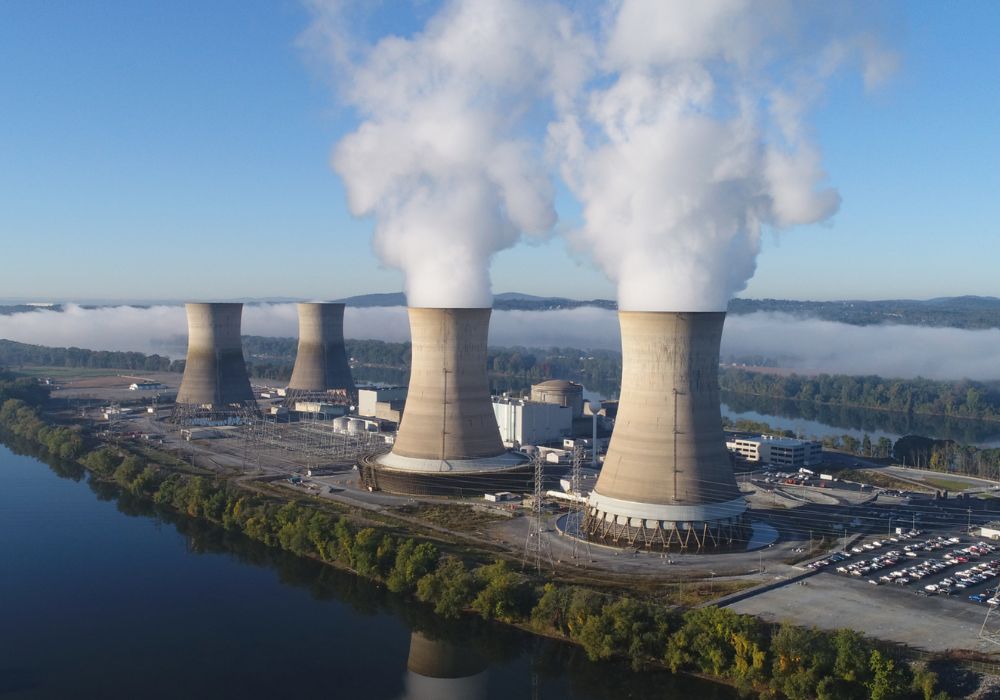Earlier this fall, Microsoft revealed that it would be reactivating part of the Three Mile Island nuclear plant – the one that had a partial meltdown in the late 1970s – to acquire all of the output from one of its mothballed reactors. The reason? To satisfy the tech giant’s increasingly voracious energy needs. The 800-megawatt reactor, owned by Constellation Energy, will allow Microsoft to supply low-carbon electricity to its energy-hungry data centres by 2028.
Such dramatic moves underscore the extraordinary amount of energy required to power the exponential growth in generative artificial intelligence computing, which completely eclipses many current uses. For example, according to a recent calculation performed by The Washington Post and the University of California, Riverside, a single ChatGPT prompt (say, to construct a response to an email) consumes the equivalent of about a bottle of water (for cooling the massive data centres run by AI giants).
Here’s another: the energy consumed by a prompt that generates a single high-resolution AI image is about equivalent to the electricity used to recharge a smartphone. It may sound small enough, but in both cases, the sheer scale of the collective impact of millions of users is bracing, and goes some way to explain why the large language models that are driving the massive surge in generative AI usage leave environmental footprints that are only getting larger as the number of users expands.
The growth, in part, is also attributable to the fact that a steadily increasing number of generative AI users rely on these powerful platforms to carry out tasks that a standard search – which requires far less energy and water – can readily perform, according to some AI experts.
“Using ChatGPT to generate text uses somewhere between 10 to 90 times more energy per query than a conventional Google search,” Ascelin Gordon, a senior lecturer at the Royal Melbourne Institute of Technology, testified earlier this fall before an Australian parliamentary committee investigating the impact of AI. “Producing an image via generative AI uses about 20 times more energy than a generative AI text query. This year, producing videos via generative AI is taking off, and the energy to produce videos is likely to be an order of magnitude higher again.”
“I find it particularly disappointing that generative AI is used to search the internet,” Sasha Luccioni, the Montreal-based AI and climate lead for Hugging Face, a machine learning firm for builders, told AFP (Agence France-Presse) recently, adding that it’s important for AI firms to “explain to people what generative AI can and cannot do, and at what cost.”
RELATED:
Canada isn’t taking the escalating environmental impact of AI seriously
Can AI terminate climate change…or is it an even greater threat?
AI may be coming for your job, but green gigs are booming
Those costs – hidden and otherwise – have been drawing intense scrutiny from climate researchers and policy-makers who point to the dramatic growth in the data-centre industry and its voracious demands for both power and water. According to the International Energy Agency, data centres and bitcoin mining accounted for 2% of electricity demand in 2022, and the growth in those verticals has exceeded all other drivers of electricity consumption.
Morgan Stanley published its own projection in September, estimating that the global data-centre sector would emit 2.5 billion tonnes of carbon dioxide – equivalent to the emissions created by 766 million automobiles – annually by 2030.
The tech giants driving the generative AI revolution – Microsoft, Google, OpenAI, Amazon and Meta – all contend that they’re working hard to mitigate the impact of all this consumption with energy-efficiency improvements designed to reduce the carbon intensity of their AI applications, as well as the purchase of “renewable energy certificates” (RECs), which are essentially carbon-offset agreements. Microsoft’s new arrangement with Three Mile Island is an example.
Yet the use of RECs has come under fire as some climate experts warn that these instruments essentially allow the double-counting of carbon-reduction measures, at both the production stage and at the consumption point, which is to say the AI giants. As an investigation by The Guardian published this past September concluded, the true impact could be in excess of seven times higher than what the tech giants are claiming in their environmental impact disclosures to investors. Soberingly, those conclusions were based on data published between 2020 and 2022 – a year before the advent of image-based generative applications.







